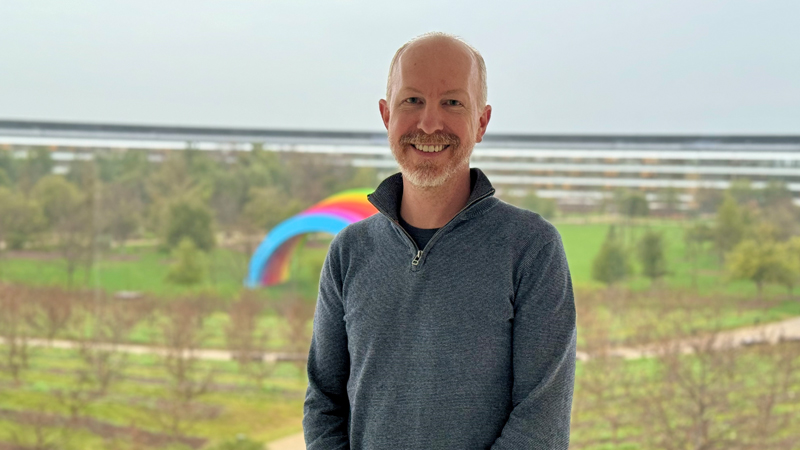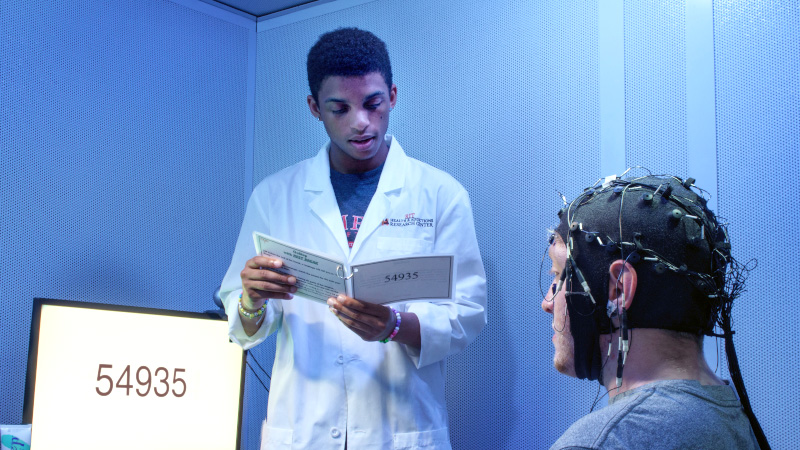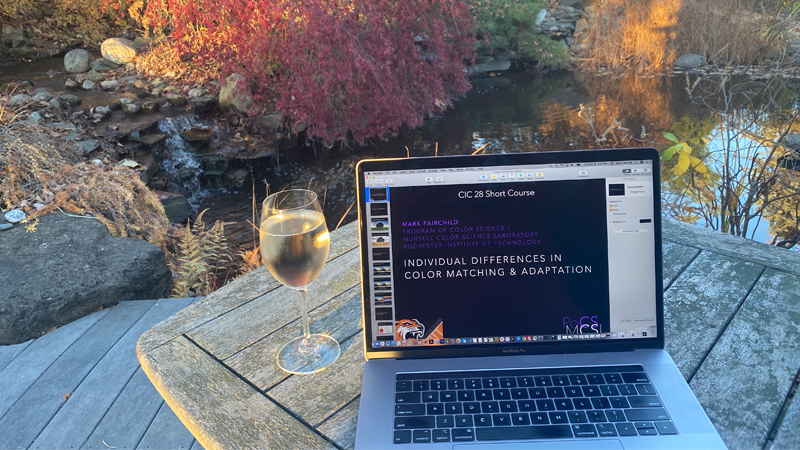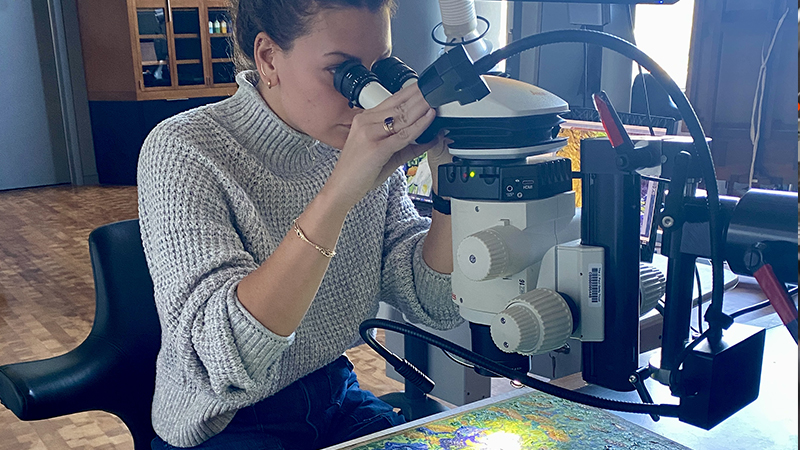A Colorful Journey: From Air Force to an MS in Color Science
Justin Laird BS ’03, MS ’05, an Air Force Veteran, discovered the unique field of color science and is now a Senior Quality Engineer for Color at Apple.

After proudly serving in the US Air Force, Justin Laird ’05 began exploring where his career would take him next. While browsing a massive book of careers, he came across a small blurb about photographic engineering that piqued his interest. This blurb launched a series of events that led him to study both photography and color science at RIT and solidified his decision to explore an exciting career in this specialized field.
"As a veteran transitioning out of the Air Force, I attended meetings designed to ease my adjustment into civilian life and explore potential career paths," shared Justin. "It was during this time that a coordinator provided me with a book full of career options, and I was immediately drawn to the field of photographic engineering. My curiosity led me to do further research, and I reached out to various companies and organizations, including SPIE, the renowned international society for optics and photonics, for guidance. SPIE was able to assist me by providing a list of educational institutions with alternative photography options. I chose RIT for its comprehensive curriculum encompassing both photography and optics."
Justin fondly recalls being accepted to RIT to pursue a BS in imaging and photographic technology as an exciting turning point. During his time at RIT, he had the opportunity to do co-ops, which ultimately led him to discover color science. It was during his summer co-op at GretagMacbeth in Switzerland that Justin's manager recommended he connect with Dr. Roy Berns at the Munsell Color Science Lab as this RIT lab was one of the few labs in the world that offered color science education at the time. After completing his next summer co-op in the RIT Munsell Color Science Lab, Justin was drawn to studying color after completing his BS degree.
“I consider myself fortunate to have pursued not one, but two unique majors at RIT, which were not commonly offered at other colleges. These programs were highly recommended by experts outside of the university and were highly respected within their respective communities. What added to the value of my education was the strong academic curriculum, which demanded a rigorous work ethic and a fast pace, keeping me engaged and focused on my studies. Furthermore, the co-op opportunities had a direct impact on my academic progress. One of the many benefits of these programs was the smaller class sizes, allowing for closer relationships to form with the administration and professors. Not only did they show genuine care and concern for their students but also for the programs they were leading.”
Today, Justin holds the position of Senior Quality Engineer for Color at Apple. In his role, he specializes in surface color appearance in the Manufacturing Design Group with a specific emphasis on metrology, lighting, and technology. His expertise allows for the efficient characterization, quantification, and tolerancing of hardware products, as well as the creation of unique visual effects on these products.
When asked about how RIT contributed to his success, he responded, "The professors' readiness to assist me during challenging times and the emphasis on practical job experience. They made sure we secured positions relevant to our fields of study, allowing us to witness the significance of our learnings in the industry."
Justin has some valuable advice for high school students interested in pursuing a career in color science. He recommends focusing on major STEM programs at school, as color science is a multidisciplinary field that requires knowledge in math, biology, and programming. Additionally, he recommends refining critical thinking and problem-solving skills, vital not only in color science but in any area of study and, more importantly, in their place of business after graduation.
In fact, Justin believes that a combination of math and art would be the ideal education for his own children. He believes that the blend of artistic and technical skills is crucial for developing critical thinking and can result in beautiful outcomes when combined. According to Justin, RIT is one of the few universities that offers this blend.
However, Justin also acknowledges that pursuing a career in color science requires a lot of hard work and time in the lab. He himself spends a significant amount of time reviewing parts and correlating visual assessment to data. He also notes that within the field of color science, there are different subsets that cater to different interests and strengths. One can choose to focus on research and development for future products or work on solving immediate problems in product manufacturing. Either way, the opportunities are vast and diverse in this field.








